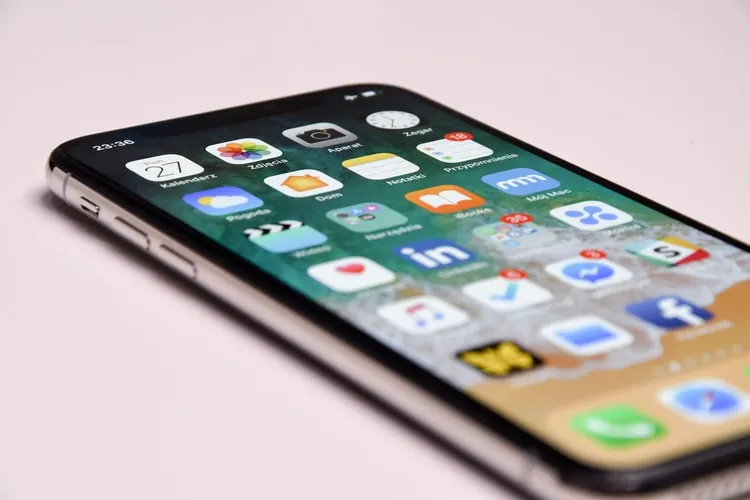

How the Evolution of iOS Has Changed the Future of App Development

Since the announcement of the launch of first-ever iPhone by Apple in 2007, iOS development has come a long way. It was a revolution. And according to Steve Jobs, it was "literally five years ahead of any other phone". The first iPhone was developed with pathbreaking features like a desktop-like email system, web browsers, and integrated maps. With touch features, it emerged as a revolutionary step replacing the QWERTY physical keyboard. Additionally, the phone was also capable of storing huge libraries of music – which was a huge deal 12 years back.
However, even the iPhone didn't have that many applications to offer back then. But when the App Store launched next year, it set the ship sailing for today's smartphone applications. Since then, the development of iOS took its own time for evolving fro, being behind the competition to a groundbreaking phone.
Evolution of iOS Over The Years
Probably the most unappreciated thing about ios is the similarity of its features from the very first version to the latest one. It has managed to keep it internally consistent and yet brought out the support with 3rd party apps and multi-tasking.
Syncing and Multi-tasking
Since its inception, ios has embellished itself with some of the most striking features. The developers have been consistent throughout its journey towards making it convenient and yet powerful. The main reason for its massive growth is its easily understood operating system (OS). And this has eventually led to provide authenticity for the developers too. Plus, the ability to sync it with Apple's other devices provides an unprecedented and integrated user experience.
Introduction of Touchscreen
When it was first launched, it majorly lacked behind Windows, Symbian and Blackberry mobiles. Plus, it didn't have any support for MMS, copy/pasting text, attaching files. Additionally, the home screen wasn't customizable and users couldn't even edit documents. On top of all, it was very much vulnerable to hacking. The smartphones of 2007 didn't have touch features or mostly were resistive. iPhone brought that innovation in the form of a touchscreen keyboard interface. It made software and hardware interact in a way that experience became simpler and powerful.
Storage Management
In the earlier days, the development of ios didn't have Automatic Reference Counting. References are the instances that need to be deallocated according to their strong or weak natures. Manual reference counting led to many bugs. However, ARC was introduced in 2011 with Xcode 2.4 to simplify time compiling. Reference counting code can be inserted automatically into the code through ARC.
Todd Moore who is the creator of White Noise once said that the experience with ios development was a lot better than with other operating systems. He had been developing for iPhone even before there was App Store. Xcode gave a certain competitive edge to the developers and yet it felt like using a regular computer. Its simplicity has only got easier until now. The latest versions of Xcode are convenient and ARC has been a great solution to reduce memory issues.
Web Browsing
When the iPhone was launched, accessing the internet on-the-go was a big advantage. Plus, Wi-Fi also didn't have its availability everywhere. However, Blackberry and Windows had cellular networks in their handsets. And even though they introduced mobile internet access years before the iPhone, it was Apple that introduced website browsing. Safari websites were launched on the phones as normal desktop sites. However, accessing sites through phones was a game-changer. It changed the life of developers as it became easier to stay connected with the team, download updates through tethering.
Layout
Auto Layout was another major thing introduced by Apple. Earlier when there was only one screen, it was easier to work around the pixels. However, the screen sizes started getting different right around since the iPhone 5 and 6 and the introduction of the iPad. It became difficult to handle all the layout sizes with the original system. Hence, Auto Layout came as another powerful technology. Though a bit complicated, the introduction of StackView it became easier to merge layout and resizing masks.
Applications and iOS SDK
The concept of apps was introduced by Apple. Apps became a phenomenon to increase and extend the phone's capability. As the requests for native app loading increased, Apple came up with its Software Development Kit (SDK). SDK became the foundation of coding apps and Apple introduced a model of pay-per-download. It introduced a pool of interesting developing tools. Developers were now capable of developing 3D games, add more functions and features, make visually stunning and advanced.
Introduction of iPad
Ios 3.2 came into the tech block as extended customization to suit iPad resolutions. This included a landscape version of Home Screen and many new dialog boxes. It made some drastic new changes in the iPhone operating system. Most prominent was adding a left-hand sidebar menu. What we know today as the "drop-down menu" was dropped to place something else. Apple replaced it with a display of the list on the left side and its description on the right. And there was no "back" option anymore. This feature was mainly implemented to enable users to see full content in either landscape or portrait mode.
App Store
Introducing the App Store helped Apple generate a revenue stream of $20 billion until 2015. And Apple made sure that there are strict regulations and restrictions for coding apps. The restraints are pretty strict regarding what kind of apps are to be included in the store. Mostly the apps that used wireless scanning for troubleshooting wireless networks are not allowed.
The distribution model helped gain Apple the advantage of regularly monitoring and scanning for virus infestations. It helped the store maintain its integrity and made the apps centralized. It also led to simple and easy management and control over preventing any potential hazards. Because all the devices are connected and data is synchronized, it makes the ecosystem vulnerable. Hence, posing these restrictions helped such issues to be addressed quickly.
Siri and Google-free Maps
Virtual assistance came with the introduction of Siri. This voice assistant is capable of doing much more than just connecting calls. Users can interact with it in a way that they are almost talking to a human. They can ask questions, direct commands to perform a task. Though it reported some bugs regarding returning some weird results, it came as one of the most exciting technologies.
Apple also ditched the most common online mapping system, Google. iOS 6 introduced its whole new version of maps that was full-featured navigation. It also had a 3D model and was integrated with Siri.
Final Words
Even though Apple came late to the competition with its features lacking behind, it ensured that everything that they introduced is of the highest standard. Apple remained true to the words "be best at what you do". And it also made sure that every innovation had the potential to grow to even greater heights in the future. The newer iOS versions also highlight the fact that as Apple grew, it also started adopting new things and opening up to 3rd party tools.







.jpg?mode=crop&crop=faces&ar=1%3A1&format=auto&w=1920&q=75)